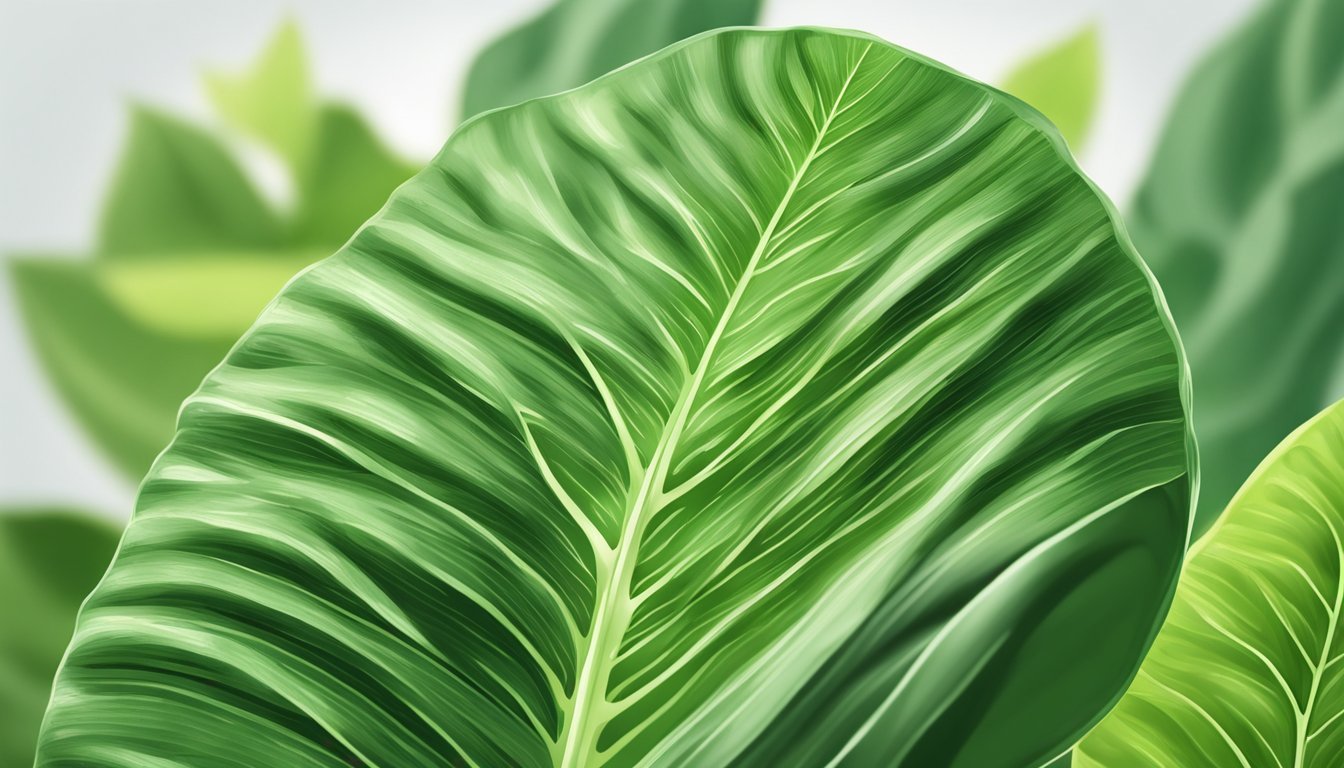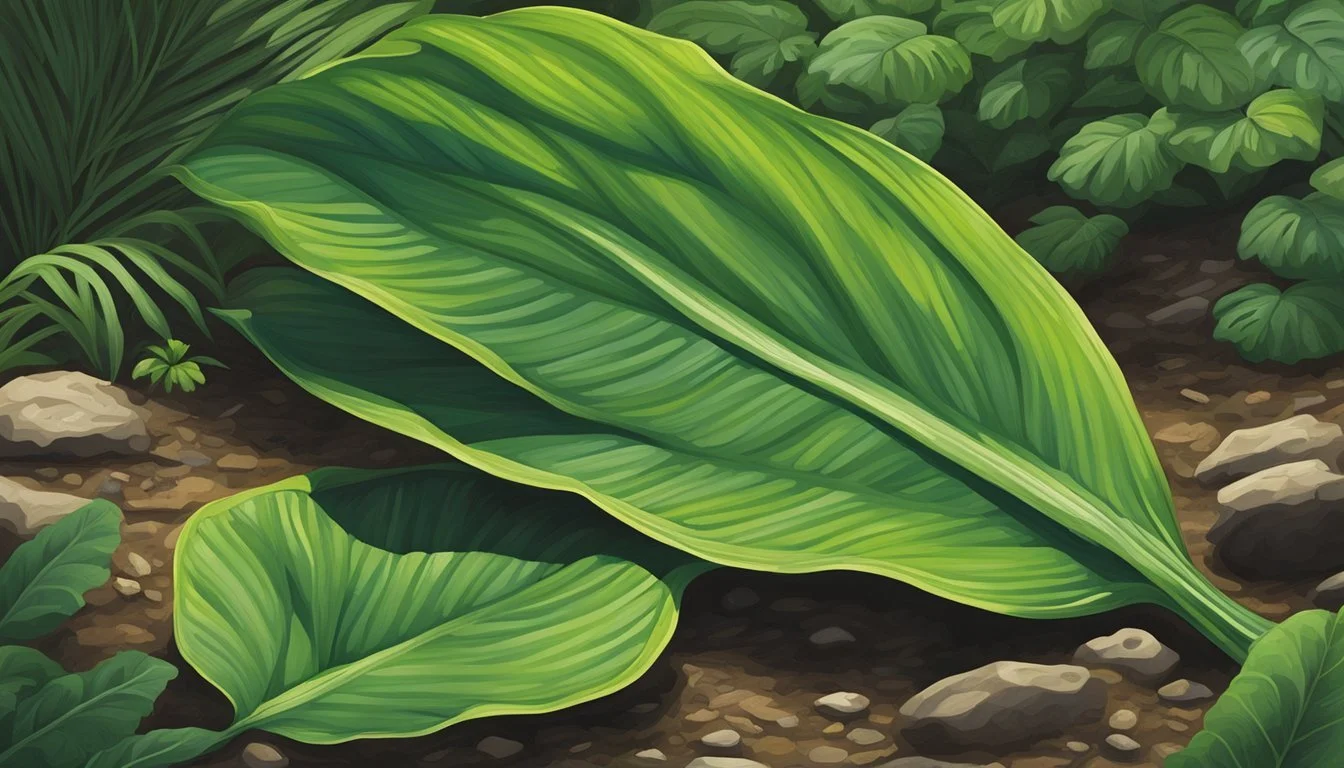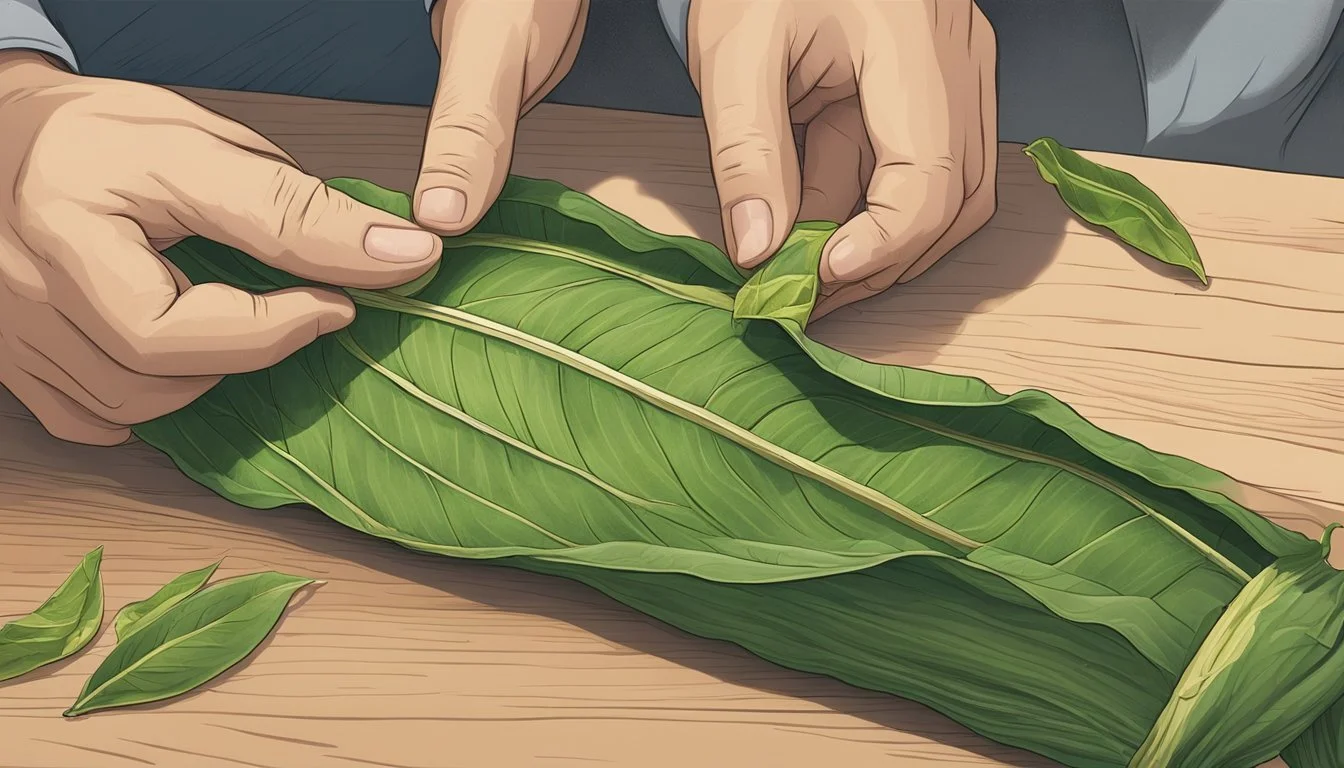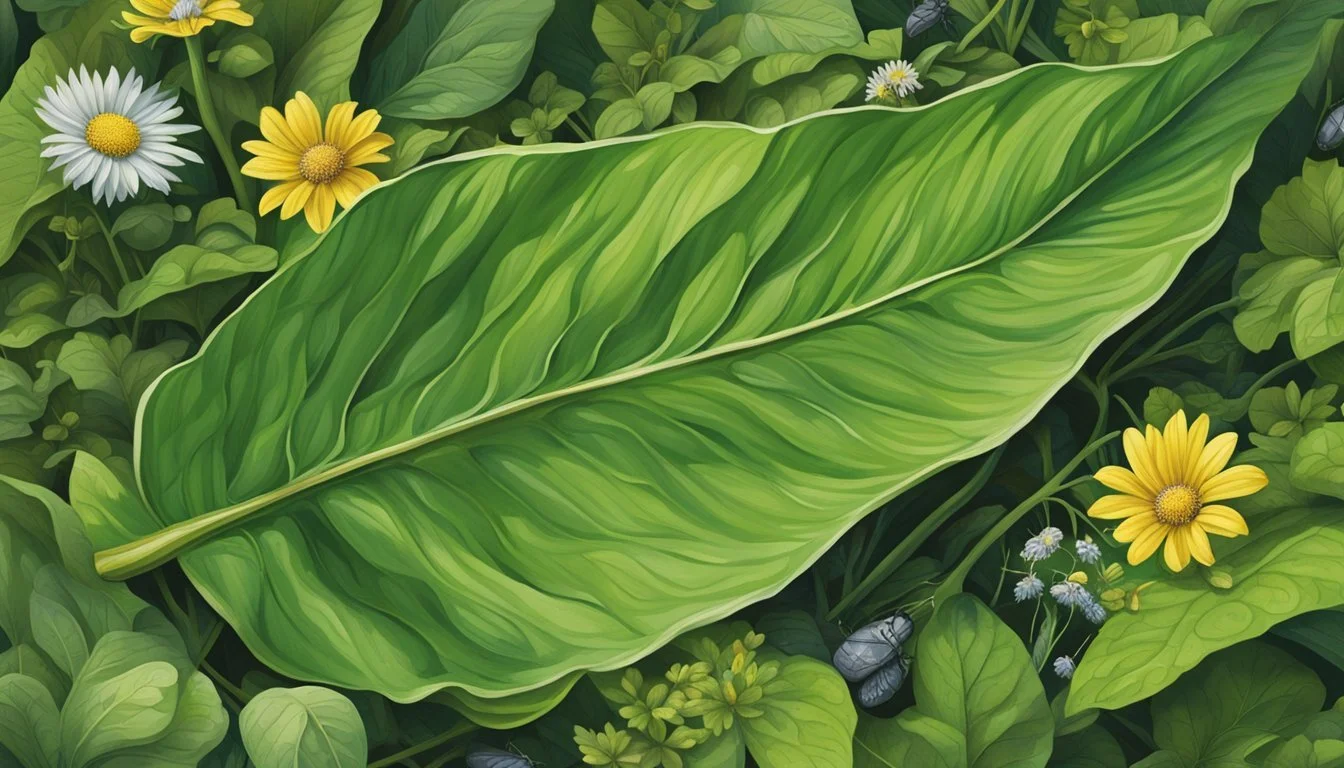Plantain Leaf
Discovering the Historical Band-Aid of Nature
Plantain leaf, often referred to as nature's Band-Aid, is a versatile and robust herb that has played a substantial role in traditional medicine for centuries. Common in gardens, fields and paths, its medicinal properties have been heralded since ancient times. With species like Plantago major, Plantago lanceolata, also known as ribwort plantain, and Plantago rugelii, the plantain family has broad, oval-shaped to narrow, lance-like leaves, all with notable healing capabilities.
The leaves of the plantain are particularly revered for their soothing properties. When applied topically, they provide relief from cuts, insect bites, and other skin irritations. This is due to the presence of active compounds such as aucubin and allantoin, which promote wound healing and have anti-inflammatory effects. Additionally, the plantain leaf has been used for its antibacterial properties, helping to prevent infection in minor wounds.
Through the combination of historical use and modern research, the plantain leaf continues to be validated as a reliable herbal remedy. Not only is it a fixture of herbalist medicine chests, but it also gains attention from those seeking natural first-aid options. The practical application of the plantain leaf in various settings, from the kitchen to the wild, underscores its enduring significance as a natural healer.
Plantain leaf, a botanical gem, has been revered for its versatile health benefits and traditional uses. This remarkable herb has been an integral part of natural remedies, cherished for its potential to promote well-being. When combined with peppermint and maca root, Plantain leaf offers a holistic approach to supporting health, reflecting its enduring appeal in ancient and modern wellness traditions.
Furthermore, the addition of aronia berries, moringa, and licorice root further complements the potential health benefits of Plantain leaf, contributing to its reputation as a versatile and effective natural remedy. Additionally, the incorporation of oil pulling and jujube fruit into wellness practices alongside Plantain leaf has expanded the spectrum of potential health benefits, underscoring the enduring appeal of this remarkable herb.
In conclusion, Plantain leaf continues to be celebrated for its positive impact on health and vitality, offering a natural solution for promoting overall well-being. Whether combined with peppermint, maca root, aronia berries, moringa, licorice root, oil pulling, or jujube fruit, Plantain leaf remains a symbol of health and vitality, embodying the rich heritage of natural health practices.
Understanding Plantain
Plantain leaves have been trusted for generations due to their therapeutic properties, often found in lawns and gardens across North America. This section explores the plant's species, identification, and ecological role.
Species Overview
Plantain is a genus that consists of potentially over 200 species; however, three species stand out for their prominence and widespread recognition.
Plantago major: Commonly known as broadleaf plantain
Plantago lanceolata: Referred to as narrowleaf or ribwort plantain
Plantago rugelii: Identified as blackseed plantain
These varieties are often considered weeds due to their tenacious nature and ability to thrive in various environments, from wild plains to backyard gardens.
Identifying Characteristics
Distinctive features allow for each species of plantain to be easily identified.
Plantago major:
Broad, oval-shaped leaves
Forms a lush rosette pattern originating from a central point
Plantago lanceolata:
Narrow, lance-like leaves that taper to a point
Leaf veins are parallel, running the length of the leaf from base to tip
Both types of plantain leaves are marked by several long, parallel veins that are a key identifying characteristic.
Plantain in the Ecosystem
As a weed commonly found in gardens and lawns, plantain plays a significant role in its ecosystem. It is highly resilient, capable of growing in compacted soil where other plants may struggle, thus often dominating spaces. The plant's popularity amongst pollinators and its use as a traditional medicinal herb indicate its dual role in supporting both biodiversity and human health. The presence of plantain can be an indicator of soil health and also provides a food source for various insects and animals.
Historical and Cultural Significance
The Plantain Leaf, often overshadowed by its fruity namesake, harbors a rich tapestry of historical and cultural relevance. It has been regarded as a natural remedy across various cultures for centuries, providing healing through its use in traditional medicine and occupying a special place in folklore.
Traditional Uses
Throughout history, Plantain Leaf has established itself as a go-to medicinal plant in various cultures. One of its most prominent applications is as a poultice for wounds, where its leaves are crushed and applied directly, believed to promote healing. It's known for its anti-inflammatory and antibacterial properties, making it an effective natural remedy for skin conditions and infections.
Forager societies have often incorporated Plantain into their remedy repertoires. Given its widespread availability, foraging for Plantain Leaf has been and still is quite common. Using Plantain Leaf to treat health issues isn't exclusive to any single culture; it spans across continents, solidifying its significance in traditional medicine. Here's a breakdown of its applications:
Skin Ailments: Used as a heal for bites, stings, and burns.
Digestive Issues: Incorporated into treatments for gastrointestinal inflammation.
Respiratory Relief: Utilized to soothe coughs and colds.
Plantain in Folklore
The Plantain Leaf holds a fascinating position in various mythologies and local tales. Its resilience and medicinal properties have painted it as a symbol of healing and protection. Folklore often features Plantain in narratives as a defense against malevolent forces, cementing its status as more than just a simple weed, but a plant of power and significance.
In some traditions, carrying Plantain was believed to safeguard one from harm, while in other stories, it played a central role in rituals, symbolizing health and prosperity. The persistence of these tales in contemporary culture underlines Plantain's staying power, not only as a healing herb but also as an enduring emblem rooted in tradition and communal identity.
Medicinal Properties and Applications
The plantain leaf is renowned for its potent medicinal properties, particularly in treating skin conditions and digestive issues, and providing respiratory relief.
Healing Wounds and Skin Ailments
Plantain leaf contains compounds such as tannins and mucilage which are instrumental in wound healing. When applied topically in the form of a poultice or infusion, the leaf facilitates the treatment of cuts, scrapes, bites, and stings. The antibacterial properties of the plantain leaf also help prevent infection in these wounds, ensuring a healthier healing process.
Example Uses:
Poultices: Crushed plantain leaves applied directly to the affected skin area.
Infusions: Plantain leaves steeped in boiling water, cooled, and applied to wounds.
Digestive System Support
Plantain leaf is a valuable source of dietary fiber, significantly derived from psyllium husks. The fiber aids in maintaining a well-functioning digestive tract, easing conditions like constipation. Moreover, this high fiber content helps maintain healthy cholesterol levels.
Key Products:
Psyllium Fiber Supplements: Ground psyllium husks consumed to increase fiber intake.
Herbal Tea: A warm tea made from plantain leaves known to soothe the digestive system.
Respiratory Relief
The mucilage present in plantain leaf also provides benefits for the respiratory system. It serves as a soothing agent for coughs and irritation in the throat. Plantain leaf infusions and teas are used to alleviate symptoms from colds and flu, acting as a natural expectorant.
Respiratory Aids:
Herbal Teas: They calm irritated mucous membranes.
Syrups: Infusions of plantain leaf combined with sweeteners to ease a sore throat.
Preparation and Usage Methods
The versatile plantain leaf can be transformed into healing teas, potent poultices, and nourishing edibles, making it a plant of great utility in natural remedies.
Making Plantain Tea and Infusions
Tea: For a soothing plantain tea, one can steep fresh or dried leaves in boiling water for 10-15 minutes.
Infusion: A stronger infusion can be made by placing leaves in a jar, pouring boiling water over them, and allowing them to sit for several hours.
Uses:
Tea and infusions can be used for digestive issues and as a mild expectorant.
Creating Poultices and Salves
Poultice:
A plantain poultice is made by crushing fresh leaves and applying them directly to the affected skin area. This can provide relief for insect bites and minor wounds.
Salve:
To create a salve, blend infused oil with beeswax until melted and mixed. Plantain oil is made by macerating the leaves in oil for several weeks or using a gentle heat source to speed up the process.
Applications:
The resulting ointment can be applied to the skin to soothe irritations and aid in healing.
Edible Uses of Plantain
Edible Parts: Plantain leaves are edible, with young leaves suitable for raw consumption and older leaves ideal for cooking.
Salads: Young, tender leaves can be added to salads for a vitamin-rich boost.
Soups: Older, tougher leaves can be cooked into soups, acting as a source of dietary fiber and nutrients.
Preparation:
As a nutritional supplement, seeds can be tinctured or added to food.
Incorporation into Diet:
The leaves can also be dried and used as a seasoning or a tea ingredient for later use.
Safety and Precautions
When using plantain leaf for its medicinal properties, it is essential to follow certain safety guidelines to prevent adverse effects. Proper identification is crucial, and awareness of potential allergic reactions can ensure its safe application.
Identifying and Avoiding Lookalikes
Plantago major (broadleaf plantain) and Plantago lanceolata (ribwort plantain) are generally safe to use, but they can be confused with similar-looking plants. It is vital to accurately identify these species to avoid ingesting or applying potentially hazardous lookalikes.
Common lookalikes to be cautious of include:
Poison Ivy: Recognizable by its clusters of three leaflets, which can cause severe allergic dermatitis.
Other Harmful Plants: Always consult a field guide or a knowledgeable forager to distinguish plantain from toxic species.
Allergic Reactions and Side Effects
Allergy Testing: Before using plantain leaf topically or internally, perform a patch test by applying a small amount of crushed leaf to the skin and waiting for a reaction. This can help determine if one has an allergy to the plant.
Side Effects: While plantain leaf is considered safe for most individuals, some might experience side effects such as:
Skin Irritation: If irritation occurs, discontinue use immediately.
Adverse Reactions: Ingestion of plantain leaf should be avoided if one has a history of allergies to psyllium or melon, as they can be cross-reactive.
Note: Plantain leaf should not be used as a primary treatment for bites from poisonous spiders or snake bites. These conditions require immediate medical attention from professionals.
Harvesting and Foraging
Harvesting and foraging for plantain leaf requires knowledge of identification and sustainable practices to ensure its availability for generations to come. This section will discuss the methods to forage and harvest Plantago, a medicinal weed known for its healing properties.
How to Forage for Plantain
Foraging for plantain begins with identification. Plantago major (broadleaf plantain), Plantago lanceolata (narrowleaf or ribwort plantain), and Plantago rugelii (blackseed plantain) are the most commonly found species in North America.
Plantago major: Look for broad, oval-shaped leaves.
Plantago lanceolata: Identify narrow, lance-like leaves that come to a point.
Plantago rugelii: Recognize a similarity to P. major but with darker seeds.
Foragers should search in environments such as lawns, roadsides, and near sidewalks, where these plants readily grow. One should look for leaves with 5 to 7 parallel veins running the length of the leaf, a distinctive feature of plantain.
Sustainable Harvesting Practices
When harvesting plantain, foragers should adhere to sustainable practices to protect the plant populations.
Selective Harvesting: Only harvest leaves from plants with an abundant presence to avoid depleting local patches.
Leave the Roots: Harvest leaves without uprooting the plant to allow for regrowth.
Seed Scattering: If harvesting seeds, scatter some back onto the soil to promote new growth.
Respectful Foraging: Forage with respect for nature, taking only what is needed and leaving the area undisturbed.
By following these guidelines, foragers can responsibly gather plantain leaves and seeds for their medicinal properties while ensuring plantain remains a resilient and useful wildcrafted resource.
Nutritional Profile
The leaves of the plantain plant are nutritionally rich, containing a range of vitamins and minerals along with dietary fiber. These constituents contribute to the overall health benefits that plantain leaves offer.
Vitamins and Minerals in Plantain
Plantain leaves are a notable source of essential vitamins such as vitamin C, vitamin K, and vitamin A. Their mineral content includes:
Calcium: Important for bone health and muscular functions.
Iron: Crucial for the formation of hemoglobin and oxygen transport.
Potassium: Necessary for proper nerve function and muscle contractions.
Magnesium: Involved in over 300 biochemical reactions in the body.
The presence of these vitamins and minerals make plantain leaves a nutritious addition to a balanced diet.
Dietary Fiber Benefits
Plantain leaves are also a good source of dietary fiber. This fiber helps in:
Digestive Health: Fiber supports bowel regularity and fosters a healthy gut environment.
Cardiovascular Benefits: It can contribute to the maintenance of healthy cholesterol levels.
By including plantain leaves in the diet, one can tap into these beneficial properties related to fiber intake.
Home Remedies and Recipes
Plantain leaf is commonly recognized for its healing properties, particularly in alleviating inflammation and pain. It has been used as a natural remedy for generations and lends itself to various applications, from topical treatments to culinary uses.
Plantain Home Remedies
Compress for Inflammation:
Clean fresh plantain leaves thoroughly.
Crush or chew the leaves to release the juice.
Apply directly to the affected area as a compress.
Healing Plantain Poultice:
Benefits: Accelerates skin regeneration and heals minor cuts.
Instructions:
Mash fresh plantain leaves into a paste.
Spread over the skin and cover with a clean cloth.
Plantain Balm as a Bandaid:
Healing Properties: Plantain balm can reduce skin inflammation.
How to Use: Apply homemade plantain balm to scrapes or minor burns to protect and promote healing.
Culinary Recipes
Plantain Leaf Salad:
Ingredients:
A handful of young, tender plantain leaves
Your choice of salad greens
Dressing of preference
Instructions: Chop the plantain leaves and mix with other greens. Dress lightly.
Infused Plantain Oil:
Benefits: Can be used in cooking or as a base for salves.
Instructions:
Fill a jar with dried plantain leaves, halfway.
Cover with high-quality oil such as olive or almond.
Let the mixture sit for several weeks, then strain out the leaves. Use the infused oil as desired.
Conservation and Ethics
When discussing the plantain leaf, its conservation is crucial for sustainability. Foragers and wildcrafters are important stewards of nature, ensuring that plantain, a plant of both ecological and medicinal relevance, is harvested responsibly without harming local ecosystems.
Foraging practices must be ethical and sustainable to prevent depletion:
Take only what is needed: This ensures the plant population can regenerate.
Respect the habitat: Avoid foraging in vulnerable or protected areas.
Promote biodiversity: Foraging should maintain, if not enhance, biodiversity levels.
Wildcrafting requires a deep understanding of local species and ecosystems. One should:
Identify the correct species, avoiding look-alikes.
Harvest at appropriate times to avoid disrupting growth cycles.
Conservation efforts are vital for plantain leaf since it provides not just medicinal benefits but ecological balance. The protection of this "nature's band-aid" aligns with broader environmental conservation ethics. It compels individuals and communities to:
Acknowledge the intrinsic value of plant life.
Foster harmonious co-existence with nature.
Engage in practices that prioritize long-term ecological welfare.
An ethical approach to foraging plantain—or any botanical specimen—acknowledges the interconnectedness of human and non-human life. By aligning conservation and foraging ethics, one ensures that plantain leaf, and other natural resources, remain abundant and accessible for future generations.










